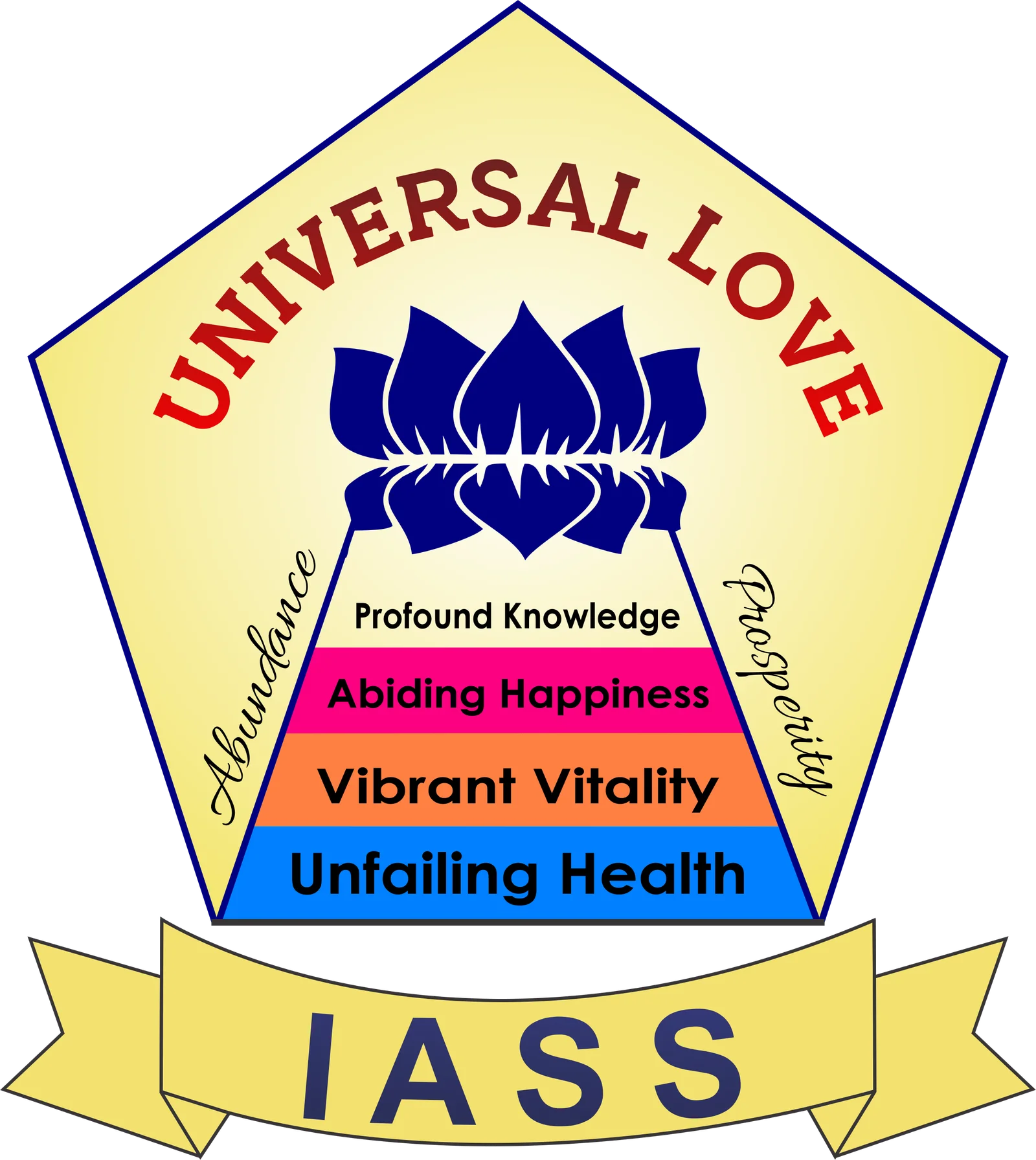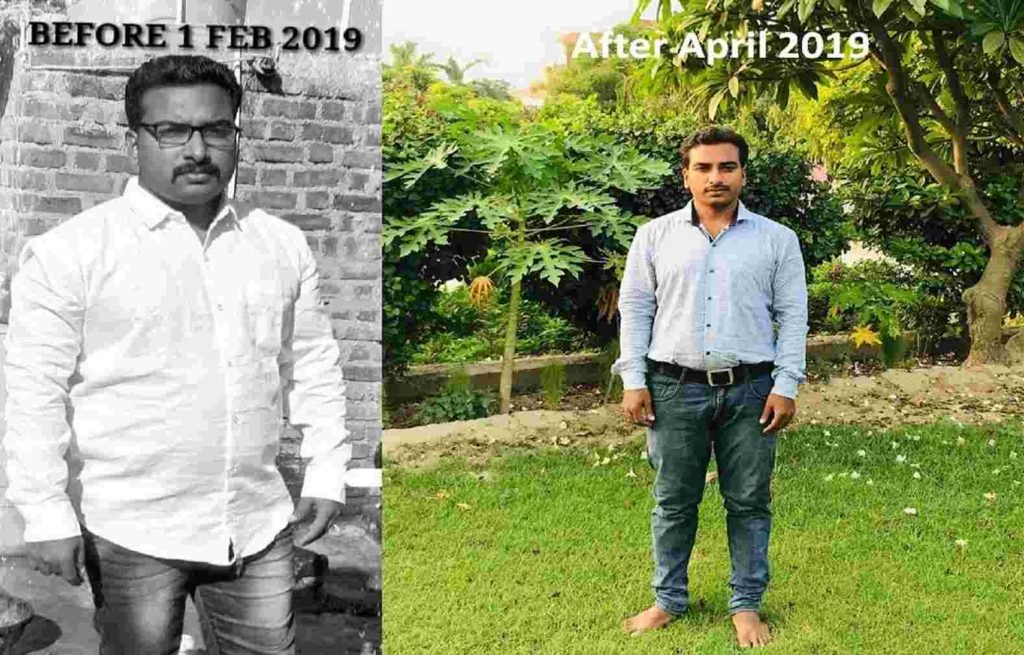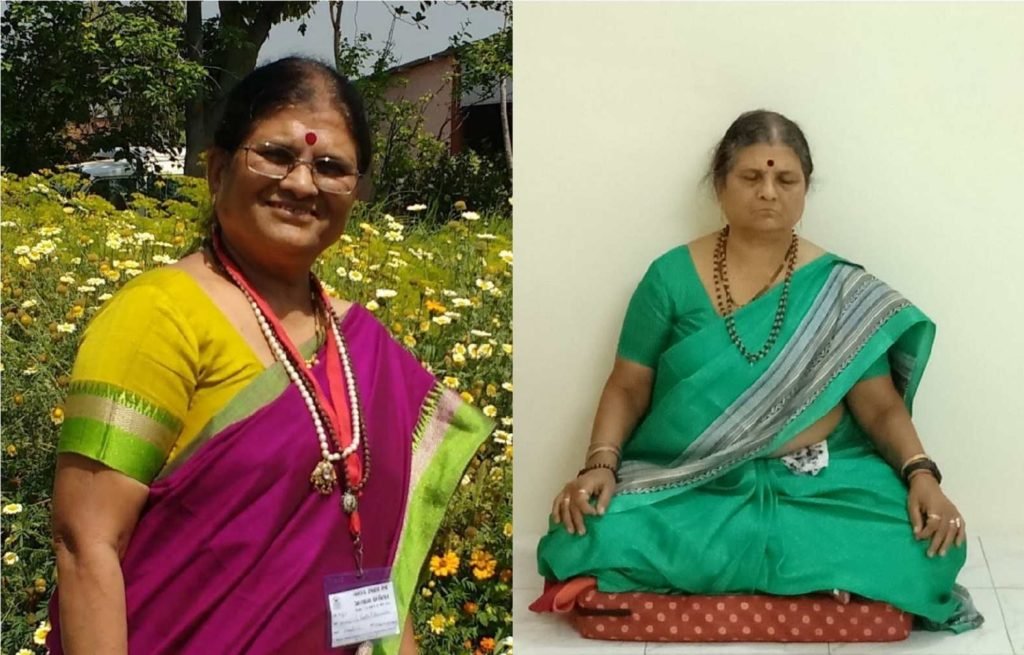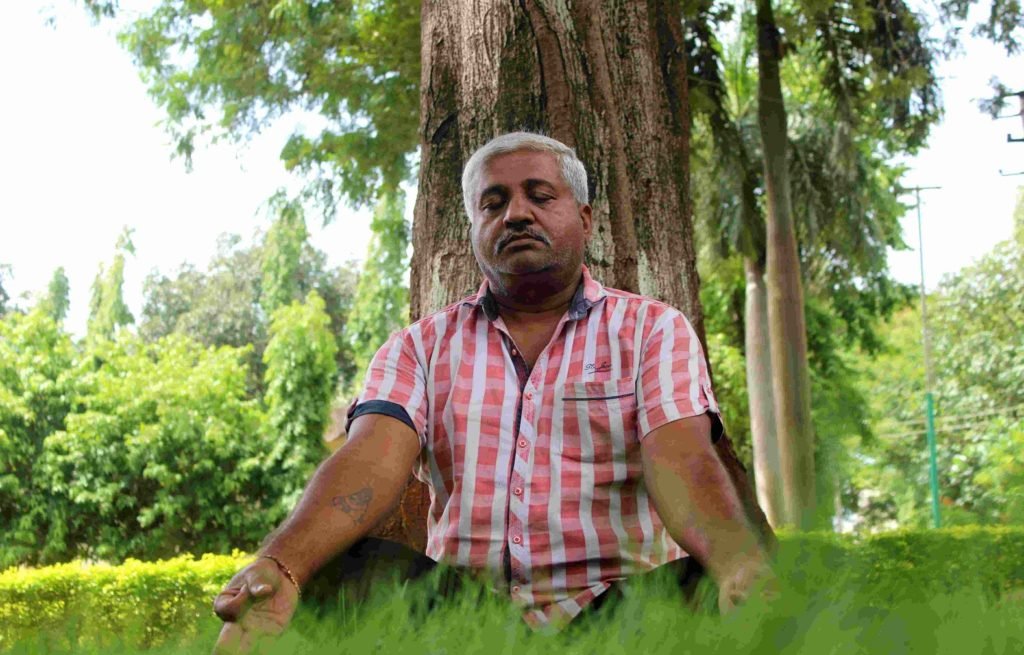Featured
How To Meditate?
HOW TO MEDITATE
RELAXATION – CONCENTRATION
It is said that the mind is as wayward and uncontrollable as the movement of air. There is a dialogue between Bhagwan Shri Krishna and Arjun on the topic in the sixth chapter of Sri Bhagwat Geeta. Arjun asks:
YOYAM YOGASTHTWAYA PROKTAH
SAAMYEN MADHUSOODAN.
ETASYAHAM NA PASHYAMI
CHANCHALTWAT STHITIM STHIRRAM.
(O Krishna! this state (Yog) of equanimity of the mind, which has been taught by you, does not seem to be possible because of the restlessness of the mind. This state of stability, even if attained, will at best be temporary.)
He further says:
CHANCHALAM HI MANAH KRISHNA!
PRAAMATHI BALVADDRIDHAM
TASYAHAM NIGRAHAM MANYE
VAYORIV SUDUSHKARAM.
(The mind in reality is restless, turbulent, strong and obstinate. Therefore I consider it as difficult to control as the wind.)
Bhagwan Sri Krishna answers:
ASANSHYAM MAHABAHO!
MANO DURNIGRAHAM CHALAM.
ABHYASEN TU KAUNTEYA!
VAIRAGYEN CHA GRIHYATEY.
MANO DURNIGRAHAM CHALAM.
ABHYASEN TU KAUNTEYA!
VAIRAGYEN CHA GRIHYATEY.
Concentration is ‘one point attention’ and meditation is ‘objectless concentration ‘.
I.e. To still the mind, it is necessary to focus the consciousness on a single point. The state of meditation is reached when even that single point disappears from the consciousness, where nothing remains.
Some people focus the consciousness on some name or physical form of God and some on both. It has been written about Mother Janki:
JEHI BIDHI KAPAT KURANG
SANG DHAI CHALEY SRI RAM
SO CHHAVI SEETA RAAKHI
UR RATAT RAHATI HARI NAM.
SANG DHAI CHALEY SRI RAM
SO CHHAVI SEETA RAAKHI
UR RATAT RAHATI HARI NAM.
(Mother Janki’s heart was continuously chanting the name of Lord Hari and simultaneously visualizing the indwelling from of Lord Ram chasing the illusory deer through the forest.)
It has been said about the venerable sage Suteekshan that in the beginning only the kingly form of God dwelt in his heart.
There are countless names of God and He assumed countless forms also, but His Swaroop i.e. His attributes remain the same, whether He assumes physical form or is formless. And these attributes are symbolized in ‘Sachchidanand’ i.e. God as the Infinite Reservoir of Indestructible Vitality, Eternal Bliss, Absolute Knowledge and Eternal Love.
VYAPAK EKU BRHAM AVINASI
SAT CHETAN GHAN ANAND RAASI.
AS PRABHU HRIDAY ACHHAT AVIKARI
SAKAL JEEV JAG DEEN DUKHARI.
SAT CHETAN GHAN ANAND RAASI.
AS PRABHU HRIDAY ACHHAT AVIKARI
SAKAL JEEV JAG DEEN DUKHARI.
The real nature of God is ‘Sat-Chit-Anand’ or Absolute – Universal Consciousness-Bliss. He dwells within all but all are suffering.
The Lord says to Shabri:
MAM DARSHAN PHAL PARAM ANOOPA
JEEV PAAV NIJ SAHAJ ROOPA
JEEV PAAV NIJ SAHAJ ROOPA
(The fruits of my vision are absolutely sublime because the devotee then realizes his true ‘self’.)
It is immaterial what name or physical form of the Lord one is concentrating upon. Even if God appears in physical form before him but until one’s true ‘self’ i.e. Sachhidanand is realized, all would go in vain.
Saint Kabir Ji says:
GHAT GHAT MERA SAIYNA
SOONI SEJ NA KOYE
BALIHARI VA GHATT KI JA
GHAT PARGAT HOYE.
SOONI SEJ NA KOYE
BALIHARI VA GHATT KI JA
GHAT PARGAT HOYE.
(My Master is All-Pervading and there is no place where He does not dwell. Blessed is the one where He is manifest.)
Concentration on form:
In this technique one may start with concentration on any form of God. Gradually the range of perception is to be squeezed from the whole form to a single point, may be the eyes or the lips or nails or the feet of the Lord. This is called JATAN or pursuit towards manifestation.
The feelings are to be developed during this attempt that Strength, Bliss, Knowledge and Love are emanating from the point of concentration and are entering the aspirant’s body, mind and intellect. This is known as NIROOPAN (Intrinsic Worth)
After some time of this NIROOPAN the aspirant will gradually lose consciousness of what he is focusing on till nothing remains. At this time he will have established contact with God or entered the Super-Conscious State.
Concentration on the name of the Lord and the method of ‘JATAN’:
First of all any name of the Lord is chosen which is dear to the aspirant, be it Ram or Rohm, Krishna or Christ. This name shall be your Mantra (word or group of words chanted repeatedly) and now to start its JAAP (constant recitation) in the following sequence.
RAM-RAM—RAM—–RAM
——-RAM———-RAM
——-RAM———-RAM
It is gradually to increase the interval between the two Mantras. As it is done the stray thoughts will start intruding and the mind may slip away to the external world. However, the consciousness will return again if the aspirant, on realization that he had lost his hold on the mind, gently but firmly brings it back to repeating the Mantras and again gradually starts increasing the time gap. This may happen a number of times. In each case, on realization, the jaap of the Mantra has to be started immediately again with gradually increasing the interval between the Mantras. A time will come when mind will be still and the consciousness, instead of returning to the outside world will have slipped inside. This is the state of meditation, in which contact with the Divine Power is established.
It has been said:
RAM RAM RAT, RAM RAM JAP,
RAM RAM RAM
RAM RAM RAM
(The first step is to chant a Mantra by the tongue, then the Mantra has to be repeated silently inside the mind and finally that stage should come when the Mantra is removed from the mind and the mind loses all consciousness of self.)
‘NIROOPAN’ of the name: (Recognition of Intrinsic Worth)
The important thing to remember is that whatsoever be the name of the Lord used as Mantra, the feeling associated during its recitation should be that the Name is the Reservoir of Power, Bliss, Knowledge and Love. If this is not done, the jaap of the Name will remain a mere act. Then, even if the mind stop for some time, but on the consciousness again becoming externalised, it will not be able to retain the experience that God is the sole source of all Vitality, Strength, Knowledge, Bliss and Love. Thus after opening the eyes the aspirant will again start thinking that energy is in food and whenever he feels enervated, he will try to remove to by eating. He will look for happiness in money and external circumstances and whenever difficulties arise, he would forget everything else and waste all his energies in collecting more wealth and in trying to improve the situation.
In some schools of meditation the mind is concentrate on the Holy Feet of the ‘Guru’. But even there, if the aspirant dose not associate Vitality, Bliss, Knowledge and Love with the Feet of the Guru, and instead considers food to be the source of energy, money to be the source of happiness, and books to be the source of knowledge, he will not able to realize the true attributes of the Lord.
The importation of ‘NIROOPAN’:
Be it the form of the Lord or His name, but if the intrinsic value of the attributes of God (Reality of the infinite Presence) is not recognised, the Divinity can not be manifested in the form of Sachchidanand. Therefore it is necessary to understand it properly.
VIDHI HARI HAR MAI VED PRAN SO
AGUN ANOOPAM GUN NIDHAN SO.
AGUN ANOOPAM GUN NIDHAN SO.
(The name of the Lord which stands for Vitality, Bliss, Knowledge and Love and is the soul of the Vedas, is beyond Sagun Nirgun.)
‘Vidhi’ stands for Brahma, who is the Lors of Power.
‘Hare stands for Vishnu, who is the Lord of Bliss and ‘Har’ stands for Shiv who is the Lord of Knowledge.
In the First phase the name of the Lord evokes his physical form (Sagun), which stands for gratification of the senses. Then follows the second phase which is an experience of the formless Divinity, which stands for permanent inner peace. In the third phase known as Purushottam, both the experiences of Nirgun and Sagun merge together, producing a life of abundance and prosperity in the outside world and permanent peace and Bliss inside.
BANDAUN NAAM RAM RAGHUWAR KO
HETU KRISHANU BHANU HIMKAR KO
HETU KRISHANU BHANU HIMKAR KO
( I rever the name ‘Ram’ of ‘Lord Raghuwar’ and which is beyond the fire, the sun and the moon but is imbibed with their attributes of heat, light and coolness.)
‘Krishanu’ stands for fire which burns and it symbolises Karmyog, i.e. It burns away all the past Karmas.
The ‘sun’ represents light of Absolute knowledge which eliminates ‘I’, and brings egoless ness, in which he realizes that he is not the doer and thus escapes the Cycle of Karmas of his past actions.
‘Himkar’ stands for the moon, which symbolises Bhakti-Yog, in which the aspirant’s entire actions are offered to God and become a service unto Him. Thus he escapes the responsibilities and consequences of all his actions.
The name of the Lord is beyond these three and is ‘Samarpan Yog’ i.e. complete surrender leading to sole dependence on God’s Grace and His Love. Thus Raghuwar represents the Sagun form, which is temporary. ‘Ram’ is the Purushottam stage, which is permanent and manifests as Unfailing Health, Vibrant Vitality, Abiding Happiness, Profound Knowledge and Universal Love and once manifested remains for ever.
The two impurities of mind:
There are two types of impurities, which prove an obstacle in meditation. One is Laya (falling asleep)and the other is Vikshep (Externalisation of the mind). In laya one falls asleep and in Vikshep the mind escapes into the outside world.
‘LAYA’:
In laya one falls asleep during meditation due to the toxic wastes in the body. As they are gradually removed from the body, the amount of asleep required progressively becomes less. Therefore, one has to follow the principle of ‘fasting’ to cleanse the body and thus remove Laya from the mind.
‘VIKSHEP’ (ESCAPING OF THE MIND IN VARIOUS DIRECTIONS):
This is due to desires and false attachments. Our senses come in contact with external attraction and pull the mind towards the outside world. Distribution and Service by the aspirant leads to a lessening of attachment and the removal of desires from the mind. But this will only happen if during ‘giving’ we give first place to God. It means that the feeling in the mind should not be of helping the needy but that we are giving in the service of the Creator in return for all that He has bestowed upon us, failing which our ego of ‘giving’ will increase. The most favourable result of distribution are obtained when we take out one tenth from our income, one fourth from the food we eat, and one hour for service in the name of God out of the 24 hours of the day.
In this way when impurities in the mind in the form of Laya and Vikshep are removed by fasting and distribution then consciousness would progress towards the state of Samadhi or deep meditation.
SUMIRAT HARIHI SAAP GATI BAADHI
SAHAJ VIMAL MAN LAAGI SAMAADHI
SAHAJ VIMAL MAN LAAGI SAMAADHI
(When Narad’s meditation attained its highest stage, both the impurities of Laya and Vikshep were removed, the mind stopped and he entered the stage of trance.)
In this way the Sachchidanand can fully be manifested.
The significance of distribution along with meditation:
Whatsoever the technique being adopted for meditation, distribution should accompany all of them.
The Supreme Power is transcendental (Beyond this illusory Universe) and is immanent (Present in every unit of Existence).
“PRAKRITI PAAR PRABHU SAB URVASI” (UTTAR. 71/7)
(God is beyond this ephemeral universe and dwells in every heart.)
One may go beyond this illusory Existence by adopting the technique of meditation, either through concentration or relaxation, but even then the contact with that Divine Reality will remain incomplete till contact with omnipresent aspect of divinity is not made through service to Him.
In Sri Ramcharitmanas is said
“TAJI HARI BHAJAN KAAJ NAHIN DOOJA” (UTTAR. 56/6)
“SO ANANYA JAKE ASI MATI NA TARYI HANUMANT
MAIN SEWAK SACHARACHAR ROOP SWAMI BHAGWANT” (KISHKINDHA 3)
“SO ANANYA JAKE ASI MATI NA TARYI HANUMANT
MAIN SEWAK SACHARACHAR ROOP SWAMI BHAGWANT” (KISHKINDHA 3)
(One should take all activities as service to God and nothing other than this).
Lord Ram tells Hanuman:
“O” Hanuman he who never forgets that he is the servant of the Lord Who is All-Pervading, he is my unparalleled devotee.”
Service unto the Lord in the form of distribution will have to be done whether the aspirant is an intellect predominant or a heart-predominant one.
Distribution in relaxation process:
Distribution leads to a reduction in the formation of new Samskars. It would not be out of place to re-stress that when a person starts taking out one tenth from his income, one fourth from his food, and also from other goods as God’s share and spends one hour from twenty four hours in service unto the Lord, the senses and the mind will start becoming internalized much more quickly. If this service is offered to that source which has shown us the light then the aspirant will himself realize how rapidly the formation of new Samskars is reduced. The Samskars are formed when the person is awake, i.e. in a period of 17-18 hours. So if the formation of Samskars is itself reduced then the consciousness would all the more easily slip into the Field of God and would return carrying the Divine elements of Vitality, Bliss, Knowledge and Love for its benefit in the awaken state.
The important thing in Relaxation process is that the aspirant must constantly evaluate the extent to which these Divine values have entered his daily life. The significance is not of the Samskars being removed but of how much have the Divine attributes manifested themselves in one’s life.
Just imagine that you are traveling in a car and are watching the passing landscape. If you are lost in all that is passing before your eyes and your attention is concentrated on all the trees and scenes etc. which have gone by and you fail to realize how far you have traveled along the road towards your destination then your journey will be useless. Because in such situation it is a distinct possibility that the car may be going around in circles at the same place while the destination might be situated somewhere on the straight road.
The importance of fasting along with mediation:
Whatsoever be the technique employed for meditation, the practice of fasting has its own special significance.
If the body is not made free from impurities, meditation will not occur properly. A complete sense of detachment from the body is possible only after very advanced spiritual development. Therefore we have to lay emphasis on purifying the body, so that it does not produce any adverse effect on our meditation. If it is not clearly understood that strength and energy come, not from food, but from within then, inner vitality will not manifest itself.
If the belief, that Vitality dwells in the Super-Conscious state, is unstable and weak then the feeling hungry or on experiencing weakness, the aspirant will try to counter it by eating food instead of by purification of the body. As a result the Supreme Reality in the form of Vitality will not manifest itself or if it does appear, it will only be temporary.
Conclusion:
In Sri Gita, Lord Krishna has said:
“YAJNA DAAN TAPAH KARM NA TYAJYAM”
(GEETA)
(GEETA)
(The three essential – Meditation, Distribution and Fasting should never be ignored.)
It has been described in Quraan Sharif as Roza, Zakat and Namaz. In Guru Granth Sahib emphasis has been laid upon Seva and Upvas along with Sumiran. In the Bible, Tithing and Fasting have been recommended along with meditation. Hazrat Mohammed kept Roza for 30 days and Jesus Christ fasted for 40 days known as ‘lent’. Guru Nanak Dev also underwent severe penance and provisions only for the daytime and distributed all in the evening. Jesus Christ also gave away everything he had, so much so that he offered even ‘himself’.
Thus the above mentioned three tenets of Sadhana or the path of self-realization have been propounded by all the holy scriptures and with them the upliftment of the human consciousness to its fullest potential is guaranteed.
Donation / Dashansh
CASES
Obesity Gone! My name is Sandeep Gadadare.…
Obesity Gone! My name is Manjula Shewale.…
Obesity Gone! My name is Manoj Gaudana.…



